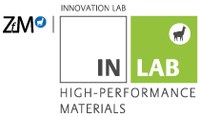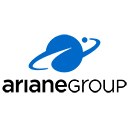Production of thin layers and electride C12A7: e⁻ coatings by means of laser ablation
- Production of thin layers and electride C12A7:e⁻ coatings by means of laser ablation
-

Partnerfirma: Ariane Group (Standort Lampoldshausen)
The "all EP satellite" introduced by Boeing provides a satellite platform which is only equipped with mass-efficient electric propulsion systems, It has crossed the threshold of commercialization in 2012. This technological revolution in the space sector is also reflected in the transition from Old Space to New Space.
A weakness of the electric propulsion systems currently used on the markett (radio-frequency ion thrusters, Hall thrusters, ion thrusters of the Kaufmann type or field emission thrusters) is the reliability of the electron-emitting neutralizer unit. The neutralizer unit is necessary in order to neutralize the positive charge of the extracted, thrust-generating ion beam of the engine and thus to avoid disturbance of the satellite operation due to charging effects. In general, hollow cathode neutralizers are used in which electrons are extracted from ceramic materials such as LaB6 or BaO / W in the plasma. Due to the comparably high work function of these emitter materials, they have to be heated to several hundred degrees Celsius during operation. This results in a high undesired demand for electrical power and a high thermal load, which makes the neutralizer unit a component of the propulsion system that limits the service life. In addition, the common hollow cathode materials are susceptible to surface contamination and, in particular, are probably not compatible with the alternative fuel iodine for ion thrusters
The ceramic emitter material C12A7:e-, which is inert to iodine and has a comparatively low work function, could represent a promising alternative and is therefore currently being intensively investigated as a hollow cathode material. It turns out, however, that this ceramic has very poor thermal properties as a bulk material, in particular, a very low thermal conductivity. As a result, the operating temperature of the hollow cathode is difficult to control. The project idea is to circumvent this by using, instead of a full C12A7:e- hollow cylinder, a well thermally conductive metallic or ceramic hollow cylinder with a thin C12A7:e- coating as the emitter insert in the hollow cathode neutralizer.
More informations: mail to Daniel Zschätzsch; mail to Malina Reitemeyer
- Index Innovationlab

